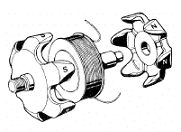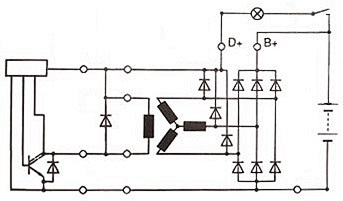Does Alternator Self-Excitation Require Rectification?
Yes.
Automobile alternators, for example, have a single axial field winding, with claw-pole halves at either end providing the alternate North and South poles.
The above claw-pole rotor images are courtesy of Image Credit - Mpoweruk.com
ResearchGate
https://www.researchgate.net/figure/Twelve-pole-claw-pole-rotor-1_fig1_324068978*Mpoweruk.com
https://www.mpoweruk.com/generators.htm
The alternator output is rectified and fed to the field winding through an 'on-off' regulator that switches the excitation current between 2 set points (e.g. 13.8 & 14.2 V for a 12V system).
Initial excitation is provided by the battery through the 'charging' indicator bulb.



